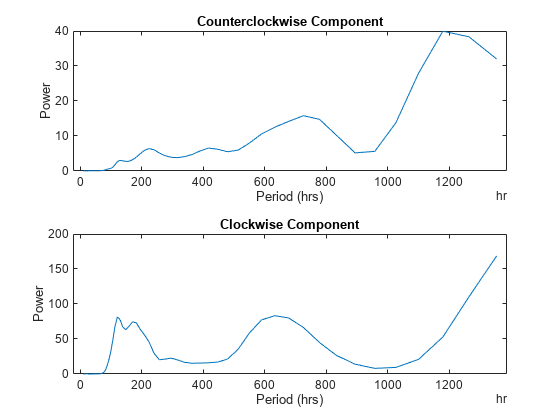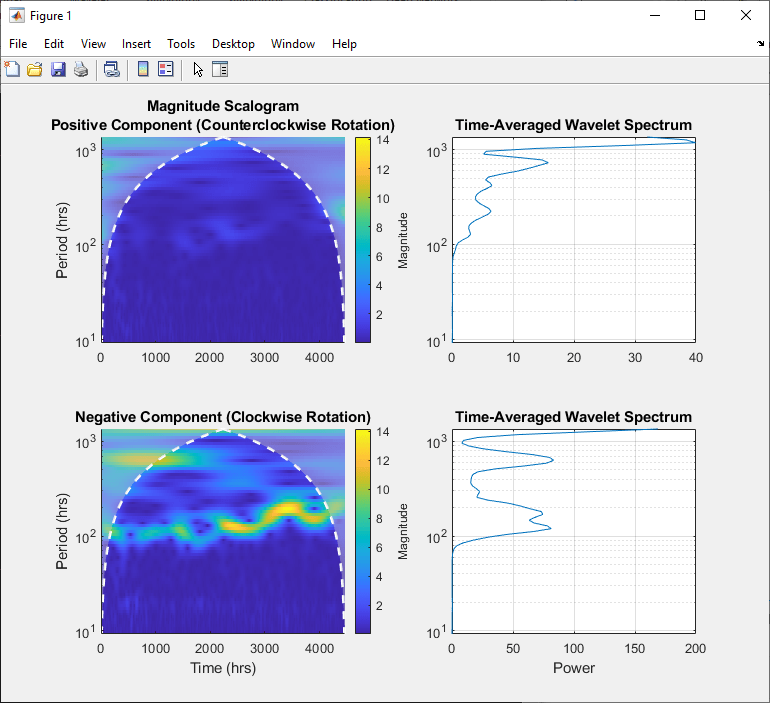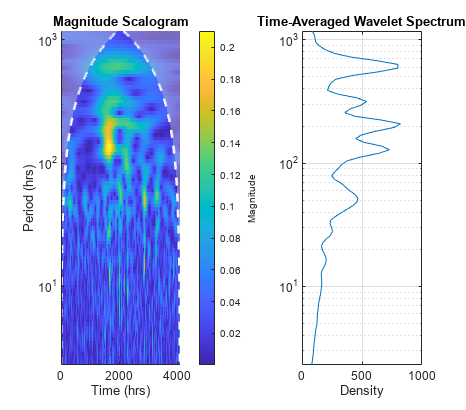timeSpectrum
Time-averaged wavelet spectrum
Syntax
Description
tavgp = timeSpectrum(fb,x)x
using the continuous wavelet transform (CWT) filter bank fb. By
default, tavgp is obtained by time-averaging the magnitude-squared
scalogram over all times. The power of the time-averaged wavelet spectrum is normalized to
equal the variance of x.
[___] = timeSpectrum(___,
specifies additional options using name-value pair arguments. These arguments can be added
to any of the previous input syntaxes. For example,
Name,Value)'Normalization','none' specifies no normalization of the
time-averaged wavelet spectrum.
timeSpectrum(___) with no output arguments plots the
time-averaged wavelet power spectrum in the current figure.
Examples
Input Arguments
Name-Value Arguments
Output Arguments
References
[1] Lilly, J. M., and J.-C. Gascard. “Wavelet Ridge Diagnosis of Time-Varying Elliptical Signals with Application to an Oceanic Eddy.” Nonlinear Processes in Geophysics 13, no. 5 (September 14, 2006): 467–83. https://doi.org/10.5194/npg-13-467-2006.
[2] Torrence, Christopher, and Gilbert P. Compo. “A Practical Guide to Wavelet Analysis.” Bulletin of the American Meteorological Society 79, no. 1 (January 1, 1998): 61–78. https://doi.org/10.1175/1520-0477(1998)079<0061:APGTWA>2.0.CO;2.
[3] Percival, Donald B., and Andrew T. Walden. Wavelet Methods for Time Series Analysis. Cambridge Series in Statistical and Probabilistic Mathematics. Cambridge ; New York: Cambridge University Press, 2000.
[4] Lilly, J.M., and S.C. Olhede. “Higher-Order Properties of Analytic Wavelets.” IEEE Transactions on Signal Processing 57, no. 1 (January 2009): 146–60. https://doi.org/10.1109/TSP.2008.2007607.
Extended Capabilities
Version History
Introduced in R2020b




